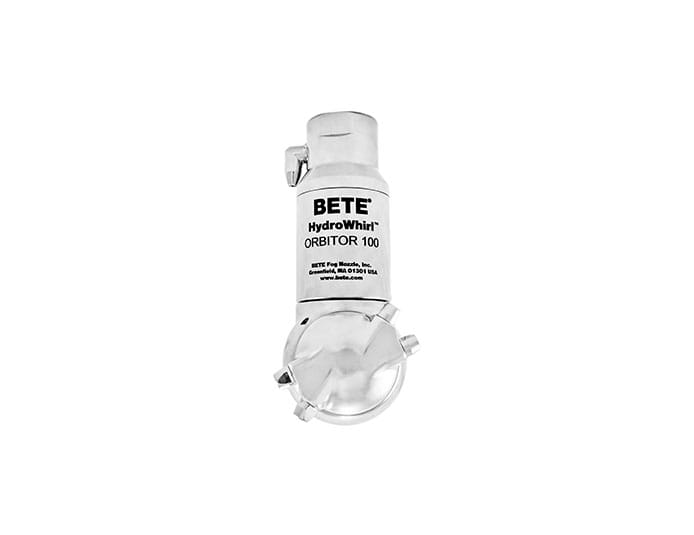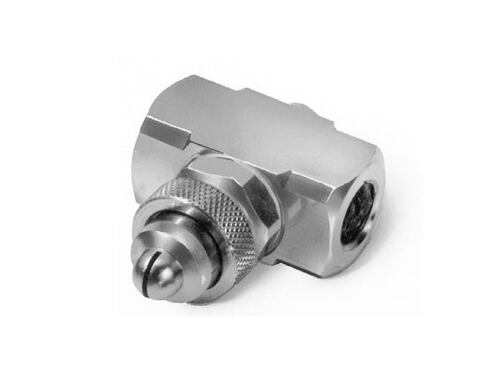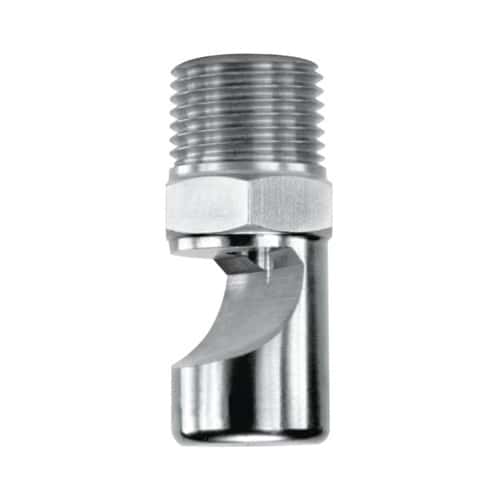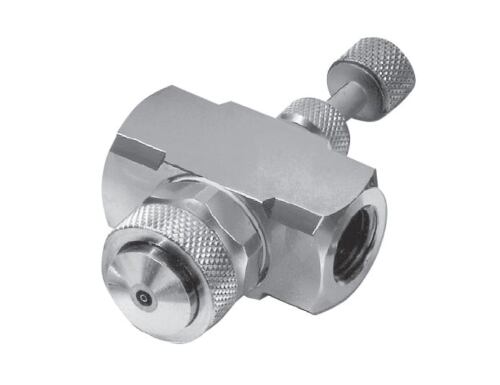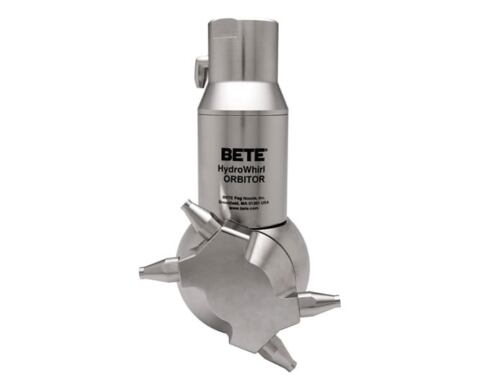Tank cleaning spray nozzles
Tank washing nozzles can be used to clean, wash, and rinse every size container from small bottles and medium-sized drums to large railroad tankers. BETE has stationary tank cleaning nozzles, rotating tank cleaning nozzles, and tank cleaning machines.
Advantages of the HydroWhirl Orbitor 100 tank cleaning machine
- The HydroWhirl Orbitor 100 can be stripped, maintained, and rebuilt in less than 15 minutes.
- The HydroWhirl Orbitor 100 is self cleaning and self lubricating.
- Enhanced external cleaning with dedicated nozzles that clean the external surfaces of the machine and its mounting pipe.
- The HydroWhirl Orbitor 100 is ideal for use in small to medium tanks where the product is difficult to clean and where high impact cleaning is required.
- Designed with minimum moving parts to ensure extended operating life and reduced down time.
- Easily fits through Ø4” (100 mm) openings; or Ø3.35” (85 mm) when nozzle head vertically aligned
Available Versions
- 4 nozzle machines
- Variable cycle times
- Female connections
Typical HydroWhirl Orbitor 100 Tank Cleaning Machine Applications
Typically used where high impingement cleaning is required and where the most efficient use of utilities is necessary.
Brewing
Bright beer tanks, coppers, maltings, brew kettles, fermenters, storage tanks
Coatings and Paints
Storage silos, process vessels, mixers
Food and Dairy
Raw milk storage, spray driers, process vessels, storage silos
Chemical
Process vessels, mixers, storage silos
Beverage
Process vessels, storage silos
BETE Fog Nozzle, Inc. has been a pioneer in spray nozzle engineering, manufacturing, and applications for over 55 years. BETE spray nozzles are used throughout the food processing and pharmaceutical industries. BETE Applications Engineering will work with you to help during trial runs and ensure you choose the optimal spraying solution.
- Common materials
- 316L


